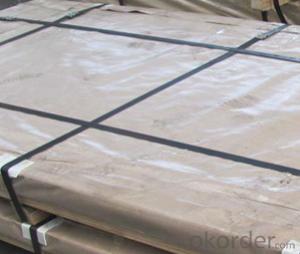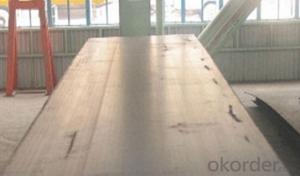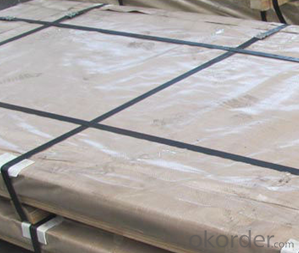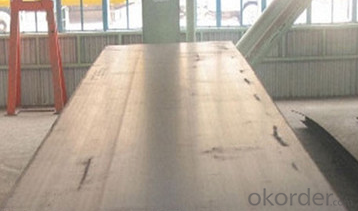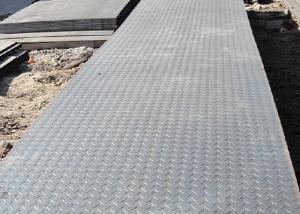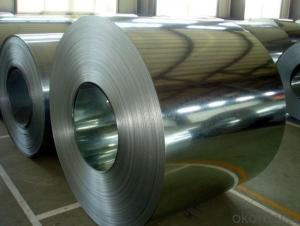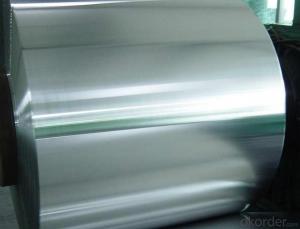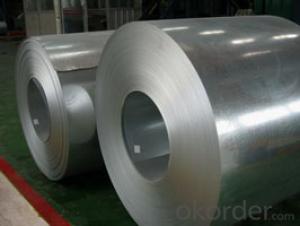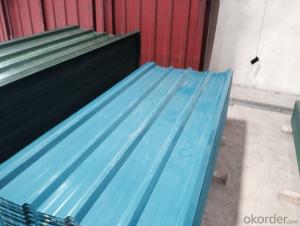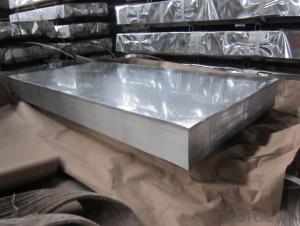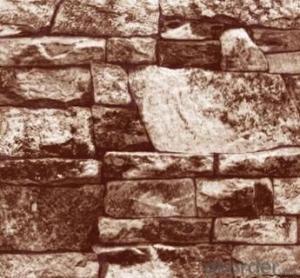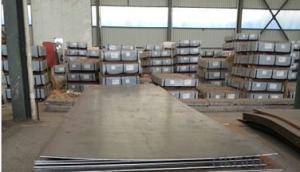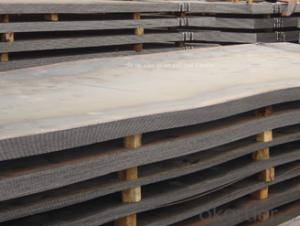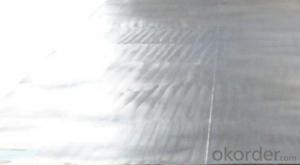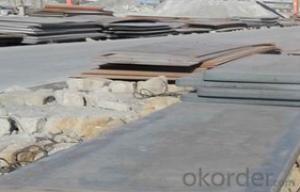Hot Rolled Carbon Steel Sheet G3136 CNBM
- Loading Port:
- Qingdao
- Payment Terms:
- TT OR LC
- Min Order Qty:
- 10 pc
- Supply Capability:
- 30 pc/month
OKorder Service Pledge
Quality Product, Order Online Tracking, Timely Delivery
OKorder Financial Service
Credit Rating, Credit Services, Credit Purchasing
You Might Also Like
Quick Details
| Standard: | AISI, ASTM, DIN, GB, JIS | Grade: | A572,A573,A633,A678,A709,A710,G3101,G3136,etc | Thickness: | 1mm-200mm |
| Brand Name: | SHOU GANG GROUP, AN STEEL | Model Number: | Q235 | ||
| Type: | Steel Plate | Technique: | Hot Rolled | Surface Treatment: | Coated |
| Application: | widely | Special Use: | High-strength Steel Plate | Width: | 1000mm-3000mm |
| Length: | 1000mm-12000mm | Price Term: | FOB CIF CFR |
Packaging & Delivery
| Packaging Details: | standard seaworthy export packing or as the request of customers |
| Delivery Detail: | 10 days after deposit or according to customers' quantity |
Specifications
hot rolled carbon steel sheet
1.Thickness:1mm-200mm
2.Length:1000mm-12000mm
3.Width:1000mm-2000mm
hot rolled carbon steel sheet
| Product | HR steel plate prices carbon steel plate prices per kg |
| MOQ | 25 ton |
| Thickness | 1mm-200mm |
| Width | 1000mm-3000mm |
| Length | 1000mm-12000mm |
| Application | widely |
| Standard | AISI,ASTM,BS,DIN,JIS,GB,etc |
| Grade | A572,A573,A633,A678,A709,A710,G3101,G3136,etc |
| Tpye | Steel plate |
| Surfacing | Coated |
| Productive Technology | Hot Rolled & Cold Rolled |
| Port | |
| Payment Terms | L/C,T/T,Western Union,MoneyGram |
| Product Ability | 5000 tons per month |
| Delivery | 10 days after deposit or according to customers' quantity |
| Packing | standard seaworthy export packing or as the request of customers |
- Q: Can steel sheets be used for making shipping containers?
- Steel sheets are indeed suitable for the construction of shipping containers. In reality, steel is the preferred material for building shipping containers because of its robustness, durability, and ability to withstand diverse weather conditions and environmental elements. Typically, steel sheets are cut, bent, and welded together to create the walls, roof, and floor of the container. This construction technique guarantees the container's strength and ability to endure the challenges of transportation, such as stacking, lifting, and exposure to harsh marine environments. Moreover, steel containers can be easily tailored and adjusted to fulfill specific requirements for storing and transporting cargo.
- Q: How do steel sheets perform in high-humidity environments?
- Due to their inherent properties, steel sheets typically exhibit excellent performance in environments with high humidity. Steel is renowned for its strength, durability, and resistance to corrosion, rendering it a suitable material for enduring conditions characterized by excessive moisture. In certain materials, the presence of high humidity can result in the development of condensation on surfaces, thereby accelerating the corrosion process. However, steel sheets are often endowed with protective layers such as zinc or other corrosion-resistant coatings. These coatings function as a barrier against moisture, effectively preventing the onset of rust. Moreover, steel sheets are frequently subjected to galvanization or treatment with specialized coatings like stainless steel or weathering steel. These measures serve to enhance their resistance to humidity and forestall degradation over time. By providing an additional layer of protection, these coatings ensure that steel sheets retain their structural integrity and continue to perform well even in environments with high humidity. It is worth emphasizing that while steel naturally possesses resistance to moisture, the implementation of proper maintenance and care remains crucial to ensure its long-term performance. Regular inspections, cleaning, and the application of suitable sealants or coatings, if necessary, can further fortify steel sheets against the challenges of high humidity. In conclusion, steel sheets are generally well-suited for high-humidity environments due to their strength, durability, and corrosion resistance. Through the application of appropriate coatings and diligent upkeep, steel sheets can uphold their performance and structural integrity even in conditions characterized by an abundance of moisture.
- Q: How do steel sheets perform in terms of vibration resistance?
- Steel sheets generally offer good vibration resistance due to their high stiffness and density. The inherent properties of steel, such as its strong and rigid structure, enable it to dampen vibrations effectively. Steel sheets have high natural frequencies, which means they can resist a wide range of vibrations and minimize the amplification of vibrations that may occur in other materials. Additionally, steel sheets can be further enhanced with various techniques, such as adding damping materials or using special coatings, to improve their vibration resistance even more. Overall, steel sheets are considered to be a reliable choice when it comes to applications requiring vibration resistance.
- Q: Do the steel sheets have any specific certifications?
- Yes, the steel sheets have specific certifications to ensure their quality and compliance with industry standards. These certifications are typically issued by recognized organizations such as the International Organization for Standardization (ISO) or specific regulatory bodies depending on the country or region. The most common certifications for steel sheets include ISO 9001 for quality management systems, ISO 14001 for environmental management systems, and ISO 45001 for occupational health and safety management systems. Additionally, there may be specific certifications related to the steel industry, such as the American Society for Testing and Materials (ASTM) standards or the European Committee for Standardization (EN) certifications. These certifications guarantee that the steel sheets meet specific criteria for various attributes, including material composition, mechanical properties, and manufacturing processes.
- Q: Can steel sheets be used for making HVAC ducts?
- Yes, steel sheets can be used for making HVAC (Heating, Ventilation, and Air Conditioning) ducts. Steel is a commonly used material for HVAC duct fabrication due to its strength, durability, and fire resistance properties. Steel sheets are typically cut, formed, and welded together to create ductwork that can efficiently transport air throughout a building. The use of steel sheets ensures that the ducts can withstand the high temperatures and pressures associated with HVAC systems while maintaining structural integrity. Additionally, steel ducts are less prone to damage from pests, moisture, and mold growth compared to other materials. Overall, steel sheets are a suitable choice for making HVAC ducts due to their reliability and ability to meet the necessary performance requirements.
- Q: Can the steel sheets be used in harsh environments?
- Yes, steel sheets can be used in harsh environments. Steel is a strong and durable material that can withstand extreme temperatures, heavy loads, and exposure to moisture, chemicals, and other harsh conditions. Steel sheets are commonly used in industries such as construction, automotive, aerospace, and marine where they are exposed to harsh environments like high heat, corrosive substances, and heavy wear and tear. Additionally, steel can be coated or treated with protective materials to enhance its resistance to harsh environments, ensuring long-lasting performance and reliability.
- Q: Stainless steel plate how to cast mirror plate?
- Our company specializes in stainless steel surface treatment, providing all types of stainless steel pickling and passivation processing business.The company adopts advanced passivation process and self matching passivation reagent, according to your passivation requirements for the preparation of products, targeted, fully guarantee your passivation process all the requirements.
- Q: Can steel sheets be used for signage or displays?
- Yes, steel sheets can definitely be used for signage or displays. Steel is a versatile material that offers durability and strength, making it suitable for both indoor and outdoor applications. Steel sheets can be cut, bent, or welded into various shapes and sizes, allowing for the creation of custom signage or displays. The smooth surface of steel sheets provides an excellent canvas for painting, printing, or applying vinyl graphics, making them ideal for showcasing logos, messages, or visual content. Additionally, steel sheets can be powder coated or galvanized to enhance their resistance to corrosion, ensuring long-lasting and attractive signage or displays.
- Q: Is the steel plate 1.5 meters wide and 2 meters wide at the same price? .
- The steel plate price is generally not the width, they only according to the different material steel plate, gives you to quote the unit price.
- Q: Should the carbon fiber reinforce the steel bar on the side of the beam?
- Not necessarily, mainly depends on how the design is calculated, usually put 100~200mm carbon fiber layering
Send your message to us
Hot Rolled Carbon Steel Sheet G3136 CNBM
- Loading Port:
- Qingdao
- Payment Terms:
- TT OR LC
- Min Order Qty:
- 10 pc
- Supply Capability:
- 30 pc/month
OKorder Service Pledge
Quality Product, Order Online Tracking, Timely Delivery
OKorder Financial Service
Credit Rating, Credit Services, Credit Purchasing
Similar products
Hot products
Hot Searches
Related keywords
